
- Home
- News
- Analysis
- States
- Perspective
- Videos
- Education
- Entertainment
- Elections
- World Cup 2023
- Features
- Health
- Business
- Series
- Economy Series
- Earth Day
- Kashmir’s Frozen Turbulence
- India@75
- The legend of Ramjanmabhoomi
- Liberalisation@30
- How to tame a dragon
- Celebrating biodiversity
- Farm Matters
- 50 days of solitude
- Bringing Migrants Home
- Budget 2020
- Jharkhand Votes
- The Federal Investigates
- The Federal Impact
- Vanishing Sand
- Gandhi @ 150
- Andhra Today
- Field report
- Operation Gulmarg
- Pandemic @1 Mn in India
- The Federal Year-End
- The Zero Year
- Premium
- Science
- Brand studio
- Home
- NewsNews
- Analysis
- StatesStates
- PerspectivePerspective
- VideosVideos
- Entertainment
- ElectionsElections
- Sports
- Loading...
Sports - Features
- BusinessBusiness
- Premium
- Loading...
Premium
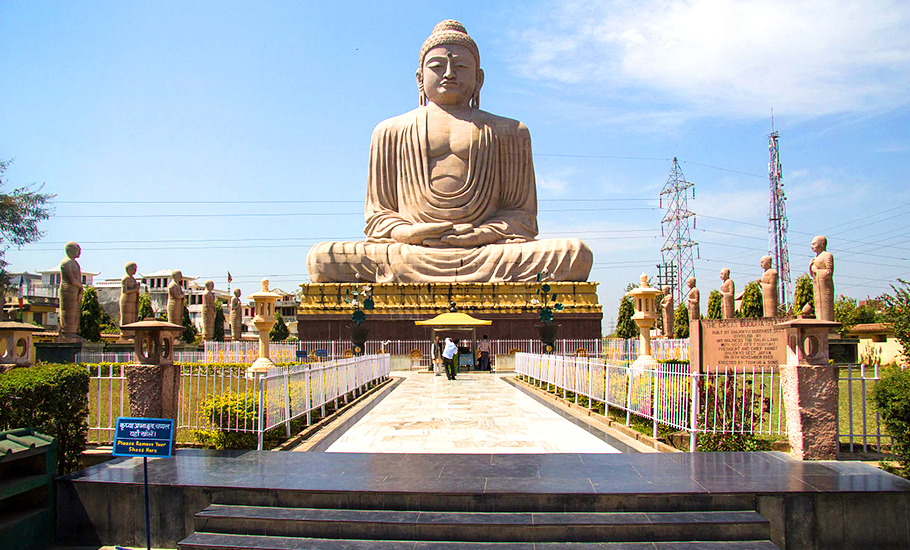
Religious tourists are flocking to Bodh Gaya again. But India must look beyond tourism revenue

A former Burmese army chief visiting India once insisted that Delhi must include a two-day back-and-forth trip to Bodh Gaya in Bihar as part of his official itinerary. When interviewed by this writer for the BBC in Shillong, General Maung Aye said unambiguously, “When we want weapons or money, we go to China, but when we want to pray for salvation, we have to come to India.” For a...
A former Burmese army chief visiting India once insisted that Delhi must include a two-day back-and-forth trip to Bodh Gaya in Bihar as part of his official itinerary. When interviewed by this writer for the BBC in Shillong, General Maung Aye said unambiguously, “When we want weapons or money, we go to China, but when we want to pray for salvation, we have to come to India.” For a devout Buddhist like Maung Aye, Bodh Gaya is the ultimate pilgrimage — like Mecca is for Muslims.
After a lull of two years due to the Covid-19 pandemic, Bodh Gaya in Bihar is buzzing again. International flights that were banned due to the pandemic have been landing at the airport in the town regularly with pilgrims from several countries including Thailand, Vietnam and Myanmar. Additionally, domestic tourists too are arriving in significant numbers. The fact that the Dalai Lama will make a comeback to Bodh Gaya after two years has added to the lure of the pilgrimage site for Buddhists across the world.
For all practical purposes, Bodh Gaya is a cosmopolitan city. Not merely because most visiting monks and pilgrims are from outside the country but also because there are a large number of foreign temples where monks — from senior clergy to the young ones — hailing from Buddhist-dominant countries, live and pray.
This unique aspect of Bodh Gaya presents a huge opportunity for India that goes beyond just capitalising on tourism. Bodh Gaya offers the potential to diplomatically leverage its historical-spiritual connect to the Buddhist world and meaningfully operationalise India’s ‘Act East’ foreign policy and use it to augment its soft power.
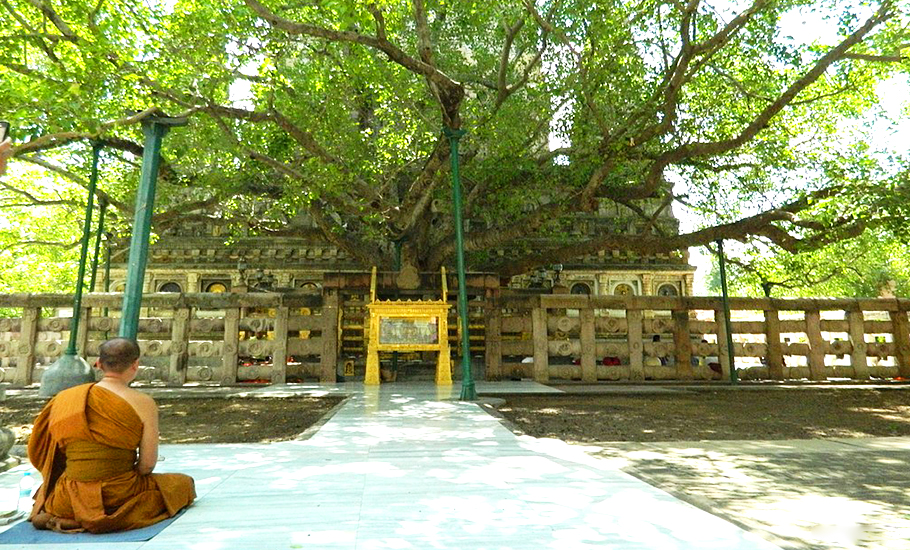
Experts believe converting Bodh Gaya into an international city is a possible first step. Venerated Buddhist figures from East, Southeast Asia and elsewhere must find a place in the city’s governance structure, alongside representatives of the central and the Bihar state government.
The demand to leverage Bodh Gaya’s lure for Budhhists globally is, however, not new.
“Years ago, I had suggested India should turn Buddha Purnima celebrations in the country into a global event to augment its soft power,” says Baladas Ghoshal, India’s leading expert on Southeast Asia.
“It is time to leverage India’s spiritual-historical connect to Buddhism to boost our profile in East and Southeast Asia,” Ghoshal said.
Perhaps, an international authority in Bodh Gaya can take the lead in organising such celebrations in what is Buddhism’s holiest site. The government should develop the site as the spiritual capital of the world and use it to strengthen the civilisational bond between India and the Buddhist world.
Turning Bodh Gaya into a Buddhist Vatican will boost India’s soft power at a time PM Narendra Modi has pitched strongly for peace diplomacy to end the Ukraine War.
The Buddhist Vatican
Among the four places held most sacred by Buddhists, the Mahabodhi temple complex in Bodh Gaya, located 111 km south of Patna, is the most visited and venerated. The other three, Lumbini in Nepal, where Buddha was born; Kusinagar, where he attained Mahaparinirvana; and Sarnath, where he gave his first sermon, are equally important. But Bodh Gaya is special.
It is here that Prince Siddharth from the Sakya Kingdom, in what is now Nepal, turned Lord Buddha after attaining Enlightenment. The Bodhi tree (ficus religiosa or peepal) under which Buddha is believed to have meditated and attained enlightenment is located within the Sri Mahabodhi Temple complex and is carefully preserved.
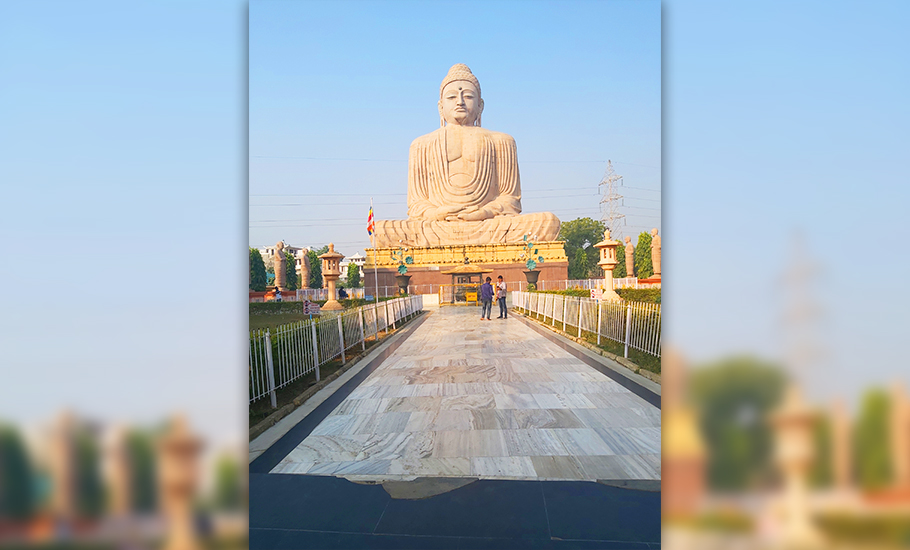
The Indian government has ambitious plans to develop a Buddhist tourist circuit centered around Bodh Gaya with World Bank funding. A large network of roads, flyovers and bridges are currently under-construction along the 500-km stretch from Kolkata to Bodh Gaya and then from there to other sites such as Nalanda and Vaishali.
The Bihar government has completed — and loudly advertised — a major drinking water project for Bodh Gaya and some other towns around it.
“Soon we should have a decent physical infrastructure in place to handle a sharp rise in tourist arrivals which has begun to pick up after two years of Covid pandemic,” says Mrinal Chakma, director of Buddhabhumi Parikrama, which handles Buddhist tourists mainly from outside India.
“Bodh Gaya and the Buddhist sites around it would have a totally different look within two years when the infrastructure projects are completed,” Chakma said.
Tourist bonanza
In 2019, tourist arrivals at Bodh Gaya had crossed the half a million mark. However, when the Covid pandemic struck and governments started introducing lockdowns, the pilgrims stopped coming. But hopes of tourist arrivals soon touching pre-Covid levels have soared with tens of thousands of pilgrims starting to land in Bodh Gaya again.
The World Bank estimates an annual tourist business potential of $6 billion (Rs 48,960 crore) for Bodh Gaya and the Buddhist Circuit around it.
“For Bihar’s economy, this would be nothing short of a boom if the government cuts down on needless bureaucratic red tape and handles the incoming Buddhist tourists with imagination,” RN Rai, who filed a public interest litigation to expedite the opening of a museum in Vaishali on Buddha’s life, said.
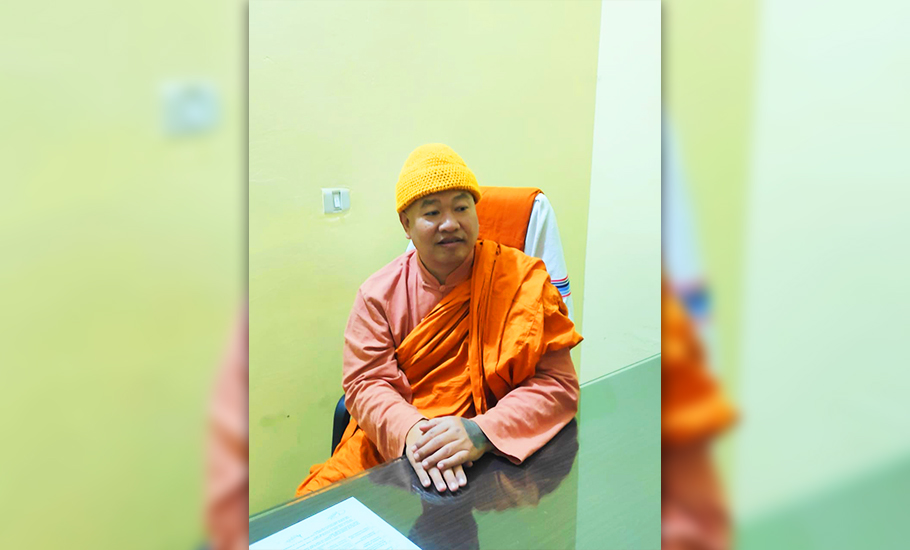
“It is not enough to build roads and flyovers. The focus should be as much on the ease of movement as on preservation of heritage which attracts Buddhist pilgrims from countries where Buddhism is still the dominant religion or widely practised,” Rai said.
Bodh Gaya’s global appeal
Most pilgrims and monks who come are from countries such as Japan and South Korea, Thailand and Myanmar, Bhutan and Bangladesh, Mongolia and Sri Lanka.
During a visit to Bodh Gaya in late November, this writer saw long queues at the Mahabodhi Temple and multiple groups of monks holding separate prayer sessions and religious discourses on the many grounds in the temple complex. A large group of Burmese monks present there said they were praying for peace in Myanmar.
Of the 52 temples in Bodh Gaya, only two are managed and run by Indian Buddhists. The rest are well endowed and run by foreign monks, some of whom are religious celebrities in their native countries. The temples proudly announce the countries that run them on the signboards so a visitor to Bodh Gaya can find the Nipponji Japanese temple, Wat Thai Temple and the Bangladesh Buddhist monastery among several others.
Even senior ministers from Communist Vietnam regularly visit the Vietnamese temple run by a Sorbonne-educated Buddhist scholar monk and offer prayers at the Mahabodhi Temple. The Thais run four temples in Bodh Gaya and a total of 37 in other key locations in the Buddhist circuit like Nalanda and Vaishali.
The 289-kgs pure gold dome atop the Mahabodhi Temple was made possible by donations received from Thai devotees. Thai and Japanese restaurants, even Bhutanese-Tibetan eateries and markets dot the holy town’s landscape. Thai monk Dr Mahapran, running one of the temples, said that his precinct houses and serves more than 50,000 pilgrims from Thailand every year.
“But I want to request the Indian government not to charge high visa fees from visiting monks because they don’t earn. One should not forget every monk brings hundreds of disciples, which means more tourists and business for the local economy,” Dr Mahapran said.
For the love of the Dalai Lama
Tens of thousands of pilgrims from East and Southeast Asia have already started arriving ahead of Dalai Lama’s visit to Bodh Gaya. He will stay in the holy city for a month after arriving on December 25.
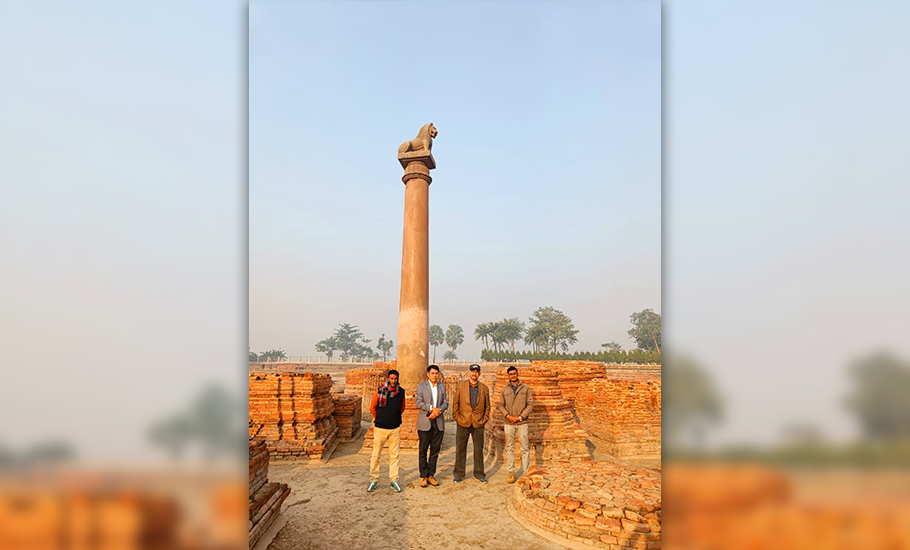
“Besides offering prayers to Lord Buddha, the Tibetan spiritual leader will also address public sessions on Buddhism’s contemporary relevance in a world torn by wars and conflicts and hold religious discourses with monks,” said Chalinda Bhikkhu, chief monk at the Mahabodhi Temple.
While the Dalai Lama’s visit may provide a fresh boost to religious tourism, the Indian government can also consider using both the Dalai Lama’s annual visit to Bodh Gaya and the Buddha Purnima celebrations for a powerful diplomatic outreach to East and Southeast Asia with a clear potential to outplay China.

